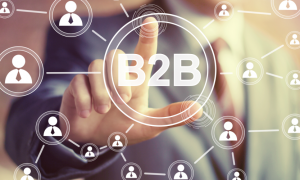A Guide to B2B Multi-Touch Attribution Models
Executives have always wanted a “single source of truth” to measure marketing effectiveness and prevent wasted ad spend.
John Wanamaker said, “Half the money I spend on advertising is wasted; the trouble is, I don’t know which half.
While today’s data-driven marketers have innumerable access to data and metrics, the question is still as relevant today as it was in John’s day.

Which marketing activities are profitable and which are not?
Every online platform – whether it’s Instagram, Facebook Ads, Google Ads, LinkedIn or YouTube – wants you to spend more money on it.
But it’s not always possible to get a complete picture of marketing effectiveness.
Luckily for us marketers, multi-sensor (or multi-funnel) attribution can be the solution.
The Multisensory Attribution (MTA) model allows you to understand the role of each touchpoint in creating a new customer.
This shows you what can be used to improve productivity and achieve growth goals.
That’s why it’s so important to get the full picture, as every touch a customer has with your brand can influence their decision to convert.
Once you understand which touchpoints are driving conversions, you can better allocate your budgets to similar touchpoints in the future and cut back on less effective ones.
What is multisensory attribution?
Multi-touch attribution models are those that measure and weight the impact of multiple touchpoints, not all attribution models.
As a result, they only count the first or last touchpoint before a conversion, rather than every touchpoint that occurs throughout the sales cycle.
What Multi-Funnel Attribution is not
An easy way to understand multisensory attribution is to compare it to other attribution models.
This is not first touch attribution
Under the first touch attribution model, the campaign’s initial marketing touch point before a closed sale is given full credit for the sale. This is where awareness marketing campaigns get credit for launching sales at the top of the funnel.
This can be useful for niche situations, but doesn’t pay attention to the middle or bottom of the funnel.
However, this can be useful as companies prepare for a future without third-party cookies and other metrics need to be tracked, such as the first point of contact.
This is not the last attribution
In this model, the last touch point that was interacted with before the lead was closed is given full sales credit.
Last touch attribution seems to be used more often than first touch attribution.
This attribution method is primarily related to the final stage of the customer journey and does not focus on actions at the top or middle of the funnel.
Why use a multi-sensory attribution approach for B2B marketing
Because you’re selling to companies, not individuals, you need an attribution model that’s based on accounts, not just individuals.
While some B2B transactions are conducted as B2C transactions, most B2B attributions require you to consider multiple stakeholders along the path to a purchase at the account level.
These stakeholders are responsible for determining whether the company will buy from you.

Companies, not individuals
It’s easy to overlook that B2B means you’re selling goods or services to companies, not individuals.
The buying process involves users, decision makers, stakeholders, and other advisors, but ultimately the company must decide whether to pay another company for its solutions.
However, at the account level or not, their path will reflect the path of the consumer.
Your brand and product will continue to be explored and engaged across all of your various channels, including:
- Web site.
- Live chat.
- Email.
- Phone calls.
- Review sites.
- Free trial of your product.
- Social media.
Organized Data, Better Strategies
All this data is difficult to organize, understand and build a useful attribution model without structured thinking.
That’s why the multi-sensory attribution model, which provides a more granular, human-centric view of a campaign than traditional methods like media mix modeling, is becoming increasingly important to marketers.
In addition to providing visibility into the success of touchpoints along the customer journey, multisensory attribution offers many other benefits.
It is critical to use data-driven marketing to use the right channel to meet consumers at the right time as consumers are increasingly adept at avoiding marketing messages.
This is possible thanks to multi-sensory attribution, which provides marketers with granular data to identify audiences across channels and determine their specific marketing goals.
